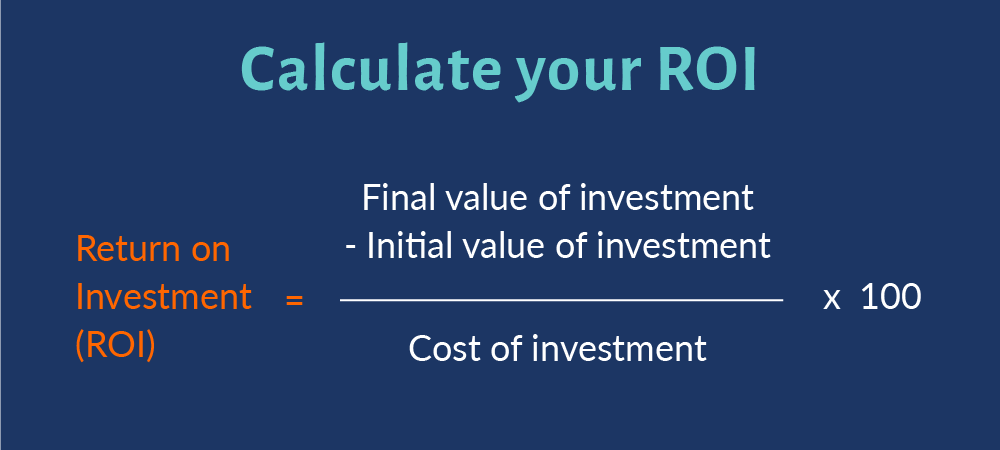
Navigating social media without a clear plan can leave businesses feeling overwhelmed and disconnected. The constant churn of posts and updates often results in low engagement, wasted resources, and missed opportunities to connect with potential customers. Competing for attention in this fast-paced environment can feel like an uphill battle, especially without a strategic approach.
A well-executed social media content marketing strategy offers a solution. By focusing on engaging, relevant, and carefully targeted content, businesses can turn their social media platforms into powerful tools for growth. From boosting brand visibility to creating meaningful customer interactions, this guide will walk you through the steps needed to unlock the full potential of social media and achieve measurable success.
Understanding Content Marketing Strategies
Importance of Content Marketing
Content marketing has become a central pillar of modern marketing, addressing the shortcomings of traditional metrics like clicks and impressions (NYT Licensing). Our social media content marketing strategy is designed to create consistent, relevant, and high-value content that resonates with a clearly defined audience. By driving meaningful engagement, this approach enhances lead generation and boosts conversion opportunities, ultimately delivering a strong return on investment (ROI). To better understand how analytics play a role in measuring success, explore our SEO Analytics for Beginners guide.
Key advantages of content marketing are:
- Strengthening brand visibility and recognition.
- Building trust and credibility with your audience.
- Boosting engagement levels across social media channels.
For a structured approach to content marketing, refer to our content marketing strategy framework.
Measuring Content Marketing ROI
Evaluating the success of your social media content marketing strategy is essential. Tracking ROI offers valuable insights into campaign performance and highlights areas for improvement. Follow these steps to measure ROI effectively:
- Cost Analysis: Add up the total expenses for content creation, distribution, and any tools or resources utilized.
- Revenue Tracking: Identify the revenue generated directly from your content marketing initiatives.
- ROI Calculation: Apply the formula ROI% = (Revenue−Investment)/Investment × 100 to determine your return on investment.

For a more comprehensive analysis of your content marketing success, consider tracking these essential metrics. Each provides unique insights that help refine strategies and drive meaningful results:
| Metric | Description |
|---|---|
| Page Views | The total count of times a page is viewed. |
| Bounce Rate | The percentage of visitors who leave the site after viewing only one page. |
| Time on Site | The average amount of time a visitor spends browsing the site. |
| Click-through Rates (CTRs) | The ratio of clicks on a link to the total number of views. |
| Conversions | The number of completed actions by visitors, such as purchases or sign-ups. |
| Social Media Engagement | Interactions on social platforms, including likes, shares, and comments. |
| Email Opt-in Rates | The number of new subscribers gained. |
| Website Comments | The volume of comments left on your blog or website content. |
Tools such as Google Analytics are invaluable for monitoring these metrics and evaluating the success of your content marketing efforts.
For in-depth guidance, explore our effective content marketing strategy and content marketing strategy examples.
Understanding the value of content marketing and how to measure ROI empowers business owners and marketers to make data-driven decisions that fuel brand growth and lead generation. To begin crafting a tailored content plan, visit our content marketing strategy template.
Defining Social Media Target Audience
Identifying your social media target audience is a crucial step in building a successful social media content marketing strategy. This involves understanding your audience’s characteristics and segmenting them into groups to deliver more tailored and impactful messaging.
Role of Social Media Target Audience
Defining a social media target audience allows for more focused campaigns that truly connect with the intended audience. By gaining a clear understanding of their needs, interests, and preferences, you can create tailored content that aligns with their expectations. This effort yields significant advantages, such as higher engagement, stronger brand loyalty, and more impactful marketing outcomes.
| Benefit | Description |
|---|---|
| Enhanced Engagement | Creating content that aligns with audience interests results in greater interaction and participation. |
| Increased Brand Loyalty | Personalized content helps build deeper relationships and trust with your audience. |
| More Relevant Campaigns | Delivering targeted messaging improves the relevance and impact of marketing efforts. |
By identifying and connecting with a specific target audience on social media, you can gain valuable insights into their needs, preferences, and behaviors. Leveraging social listening tools helps uncover what captures their interest, addresses their challenges, and aligns with their content preferences (Sprout Social). This understanding enables you to create messages and content that genuinely resonate and engage effectively.
Segmentation for Effective Messaging
Segmentation plays a crucial role in crafting messages that resonate with your audience. Social media target audiences can be divided into groups based on common traits such as demographics, location, interests, purchase intent, subcultures, or existing customer status. Tailored messaging for each group ensures that content aligns with their unique characteristics and preferences, enhancing its effectiveness.
| Segmentation Criteria | Description |
|---|---|
| Demographics | Age, gender, income, education level, etc. |
| Location | Geographic location of the audience. |
| Interests | Hobbies, activities, and interests that align with our brand. |
| Purchase Intent | Likelihood of purchasing our products or services. |
| Subculture | Specific groups defined by unique traits or lifestyles. |
| Existing Customers | Current customers who are loyal to our brand. |
Utilizing market research, industry trend analysis, social media data, analytics, and competitor evaluations offers valuable insights into consumer behavior, preferences, and emerging trends. These insights are essential for identifying and defining a new social media target audience.
Lacking a clear understanding of your target audience can result in messaging that lacks focus and impact. In today’s marketing strategies, leveraging data to define your audience is essential. The deeper your understanding of their needs and preferences, the more effectively you can engage them with your content, driving better results for your brand.
For more details on developing a comprehensive strategy, refer to our guides on content marketing strategy examples and B2B content marketing strategy.
Strategies for Social Media Audience Engagement
Capturing your social media audience’s attention is vital for a successful content marketing strategy. This involves understanding their needs and preferences through analysis and leveraging social listening tools to boost engagement.
Analyzing Audience Needs and Preferences
Recognizing your audience’s needs and preferences is essential for creating content that truly connects with them. By examining these aspects, you can craft messages that align with their expectations and encourage engagement.
Tools such as market research, industry trend analysis, and data analytics are invaluable for gaining insights into consumer behavior, preferences, and emerging trends (Sprout Social).
In fact, 80% of customers are more likely to make a purchase from brands that provide personalized experiences (Impact Networking). This highlights the importance of understanding and addressing your audience’s unique requirements.
| Metric | Description |
|---|---|
| Customer Response Rate | The likelihood of customers responding positively to personalized interactions, with 80% more likely to make a purchase. |
| General Engagement Rates | Engagement levels differ across industries, depending on audience behavior and preferences. |
Analytics data plays a critical role in understanding how your target audience interacts on social media. By examining this data, you can customize your content to align more closely with their needs and preferences (Santa Clara University Online Degrees).
Taking a more focused approach by targeting specific audience segments allows you to connect with individuals who are most likely to be interested in your product or service. Discover additional strategies for effective audience segmentation here.
Utilizing Social Listening Tools
Social listening tools are essential for gaining insights into your audience’s interests, preferences, and challenges. They enable you to track and analyze conversations on social media related to your brand, industry, and competitors.
By leveraging these tools, you can access real-time data on what your audience is discussing, the content they engage with most, and the questions or concerns they raise.
| Tool | Features |
|---|---|
| Sprout Social | Social listening, analytics, and competitor analysis. |
| Hootsuite | Trend tracking, real-time monitoring, and performance evaluation. |
| Brandwatch | Sentiment analysis, consumer insights, and industry trend tracking. |
Using these insights allows us to craft content that is both relevant and valuable to our audience, driving higher levels of engagement. For detailed guidance on incorporating social listening tools into your approach, explore our template for developing a content marketing strategy.
By thoroughly analyzing audience needs and utilizing advanced social listening tools, you can significantly improve your social media content marketing strategy.
Maximizing Social Media Marketing Effectiveness
Benefits of Market Research
Market research is a critical foundation for building a strong social media content marketing strategy. It provides insights into industry trends, consumer behavior, and audience preferences, helping to design more focused and impactful campaigns. Resources like trend analysis, social media data, and competitor evaluations deliver valuable information to guide and refine your marketing efforts.
When conducting market research, it’s important to concentrate on these key areas:
- Consumer Behavior: Identify what influences and motivates your audience’s decisions.
- Industry Trends: Stay informed about the latest developments and innovations shaping your industry.
- Competitor Analysis: Examine competitors to uncover their strengths and weaknesses, providing opportunities to refine your own strategy.
| Metric | Data Source | Importance |
|---|---|---|
| Consumer Preferences | Surveys, social media analysis | Guides the creation of content that aligns with audience expectations. |
| Industry Trends | Market research reports, news outlets | Ensures strategies remain current and relevant. |
| Competitor Analysis | Competitor social media, websites, reviews | Highlights opportunities and gaps to enhance your marketing efforts. |
Prioritizing these metrics helps us create content that resonates with our audience, resulting in increased engagement and a stronger brand image.
Leveraging Social Media Data
Social media platforms produce a wealth of data that can be used to refine marketing strategies. Analyzing key metrics helps pinpoint strengths and areas for improvement, enabling informed, data-driven adjustments. Here are some effective ways to utilize social media data:
- Audience Insights: Leverage analytics tools to gain a clear understanding of your audience’s demographics, preferences, and behaviors.
- Engagement Metrics: Monitor likes, shares, comments, and other interactions to evaluate how well your content resonates.
- Performance Reporting: Use data tracking and analysis to generate detailed reports on your marketing efforts and outcomes.
| Metric | Tool | Purpose |
|---|---|---|
| Audience Demographics | Facebook Insights | Tailor content to align with the needs of specific audience groups. |
| Engagement Rate | Twitter Analytics | Assess how well content connects with and engages your audience. |
| Campaign Performance | Google Analytics | Analyze the effectiveness of your marketing campaigns. |
Utilizing this data empowers strategic decision-making, enhancing the overall success of social media marketing efforts. For detailed insights on creating a focused strategy, explore our article on effective content marketing strategy.
These practices also align with concepts outlined in resources such as the content marketing strategy framework. By leveraging social media data, you can optimize your approach to deliver impactful and highly engaging marketing campaigns.
Enhancing Social Media Content Engagement
To strengthen your brand’s online presence, creating content that connects with your audience is essential. Incorporating engaging visuals and using hashtags strategically are vital elements of an effective social media content marketing strategy.
Creating Engaging Visual Content
Visual content plays a crucial role in boosting engagement on social media. Research from Hootsuite shows that posts featuring images, videos, or graphics attract more clicks, shares, and comments compared to text-only posts. This highlights the value of integrating visuals into your content marketing strategy.
To create visually engaging posts, we recommend the following elements:
- Photos: High-quality visuals grab your audience’s attention instantly.
- Images with Text Overlay: Adding brief, impactful text to images effectively communicates your message.
- Videos: Short, compelling videos often generate more engagement than static images.
The table below highlights the engagement rates associated with various types of visual content:
| Content Type | Engagement Rate Increase |
|---|---|
| Photos | 56% |
| Images with Text Overlay | 72% |
| Videos | 120% |
Incorporating these visual elements allows businesses to boost their social media presence while building deeper connections with their audience.
For additional tips on creating impactful visuals, visit our video content marketing strategy page.
Hashtags are essential for increasing the visibility of social media posts. By incorporating popular and relevant hashtags, your content becomes more discoverable, attracting a wider audience. TNA Suite highlights that using trending hashtags such as #FlashbackFriday, #ThrowbackThursday, #MotivationMonday, and #MondayMantra can significantly enhance engagement.
Here are some essential tips for using hashtags effectively:
- Relevance: Choose hashtags that align with your content and industry to maintain audience interest.
- Blend of Popular and Niche Hashtags: Use a mix of trending and specific hashtags to reach a wider yet targeted audience.
- Branded Hashtags: Develop unique hashtags for your brand to inspire user-generated content and monitor engagement.
Below is a table of popular hashtags and their common uses:
| Hashtag | Typical Use |
|---|---|
| #FlashbackFriday | Sharing past photos or memorable moments. |
| #ThrowbackThursday | Highlighting nostalgic or retro-themed content. |
| #MotivationMonday | Sharing motivational quotes or uplifting messages. |
| #MondayMantra | Posting inspiring quotes or affirmations. |
Integrating these strategies into your social media content can greatly boost engagement and strengthen your brand’s presence. For further insights on crafting compelling content, check out our content marketing strategy examples.
Mastering and applying these techniques will help your social media content stand out. Use these approaches to amplify your content’s impact and support your brand’s growth.
Evaluating Social Media Marketing Performance
Evaluating the effectiveness of your social media content marketing strategy is essential for achieving success. Monitoring key metrics and leveraging analytics tools enable data-driven decisions to refine and enhance your marketing efforts.
Tracking Key Metrics
Evaluating social media marketing performance requires tracking a range of key metrics. These metrics offer valuable insights into audience engagement and help assess the success of your campaigns.
| Metric | Description |
|---|---|
| Social Media Engagement | Tracks interactions such as likes, shares, and comments on social media posts. |
| Web Traffic | Measures the number of visitors coming to your website through social media platforms. |
| Click-Through Rates (CTR) | Calculates the percentage of users clicking on links in social media posts. |
| Email Opt-In Rates | Counts the number of new email subscribers gained via social media campaigns. |
| Conversions | Monitors the number of desired actions, like purchases or sign-ups, originating from social media traffic. |
| Website Comments | Records the volume of comments on blog posts or other website content referred from social media. |
| Time on Page | Captures the average time visitors spend on individual web pages. |
| Bounce Rate | Indicates the percentage of visitors who leave your site after viewing only one page. |
Regularly tracking these metrics helps pinpoint what is performing well and where adjustments are needed. For additional examples of important metrics, explore our article on effective content marketing strategy.
Using Analytics Tools for Decision-making
Using analytics tools is vital for gathering and analyzing data to evaluate the success of social media marketing campaigns. These tools offer detailed insights into user behavior, website traffic, and other important performance metrics.
Google Analytics is a powerful tool for monitoring website traffic, user behavior, and key metrics. It enables you to assess the impact of your social media efforts and make data-driven decisions to refine your strategy.
| Analytics Tool | Features |
|---|---|
| Google Analytics | Tracks website traffic, user behavior, conversions, and time spent on site. |
| Hootsuite Analytics | Monitors social media engagement, audience reach, and click-through rates. |
| Sprout Social | Delivers detailed reports on social media performance, audience demographics, and engagement. |
| HubSpot | Measures email opt-in rates, social media conversions, and overall website metrics. |
Using these analytics tools, we can generate detailed performance reports that provide valuable insights into audience behavior and the effectiveness of our marketing campaigns. Examining specific metrics helps uncover strengths and areas for improvement, allowing us to refine strategies for better results. For additional guidance on building a winning content marketing plan, check out our content marketing strategy template and content marketing strategy framework.
Focusing on data tracking and analysis as part of your marketing evaluation process enables informed decision-making, helping to improve your social media content marketing strategy and achieve sustained success.
Elevating Your Social Media and Content Marketing
Social media and content marketing go hand in hand, forming a powerful combination for building brand awareness, engaging audiences, and driving measurable results. By understanding your target audience, leveraging analytics, and implementing proven strategies like visual content, hashtags, and segmentation, you can create a comprehensive social media content marketing plan that resonates with your audience and aligns with your business goals.
With the right tools and insights, it becomes easier to track key metrics, refine your approach, and optimize your efforts for long-term success. Whether you’re focused on increasing engagement, driving conversions, or building a loyal customer base, social media and content marketing are essential components of a modern marketing strategy.
Ready to take your efforts to the next level? Explore our resources on effective content marketing strategy and content marketing strategy examples for actionable insights and inspiration.







